In spite of starting my career in the Army, I retired from the Air Force. Although I worked primarily in the intelligence business, I served on jump status during various SOF assignments in both services.
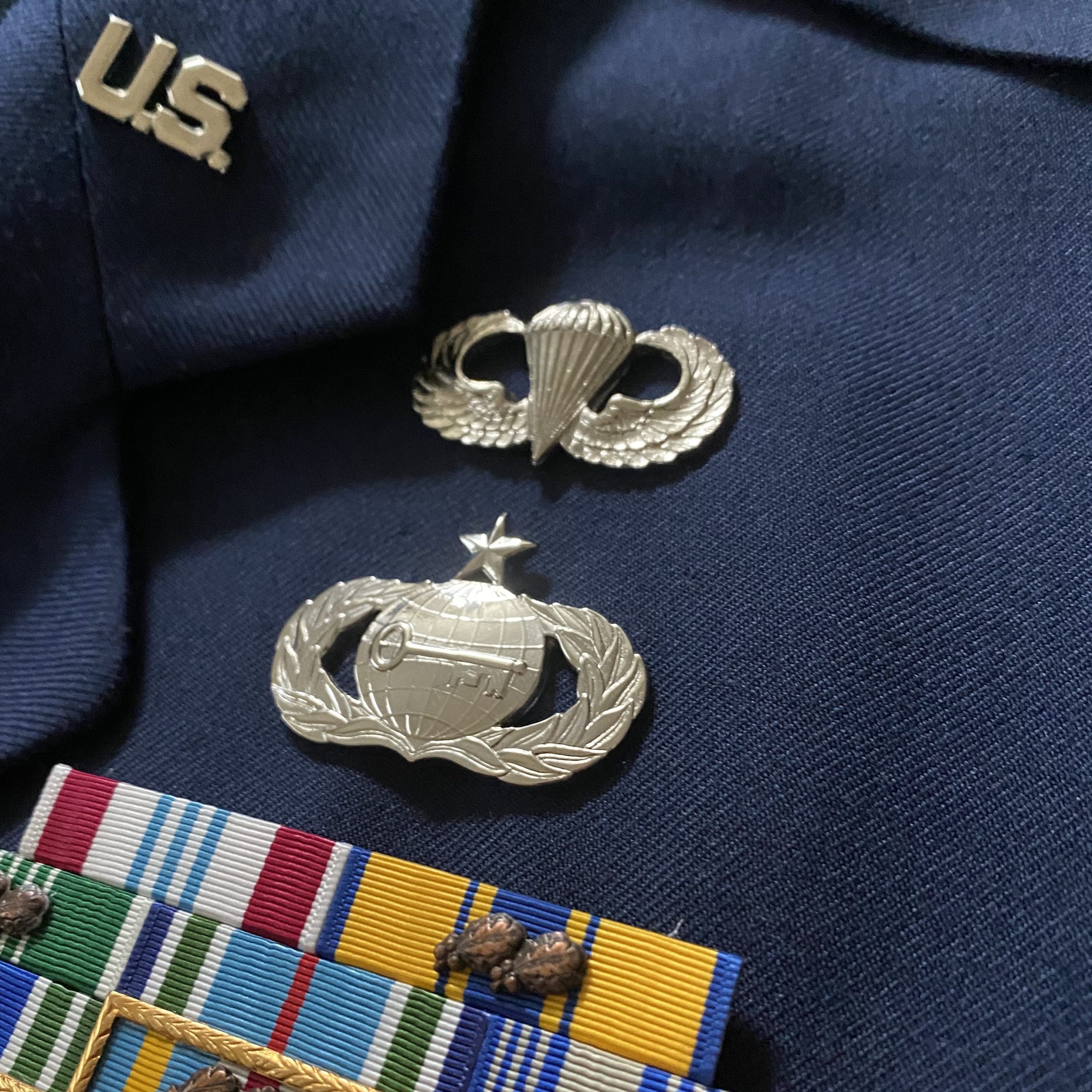
One of the easiest ways to deduce if an Air Force Officer is an Academy graduate is that they have jump wings (that is if they haven’t already told you). That’s because the AFA offers a course in skydiving.
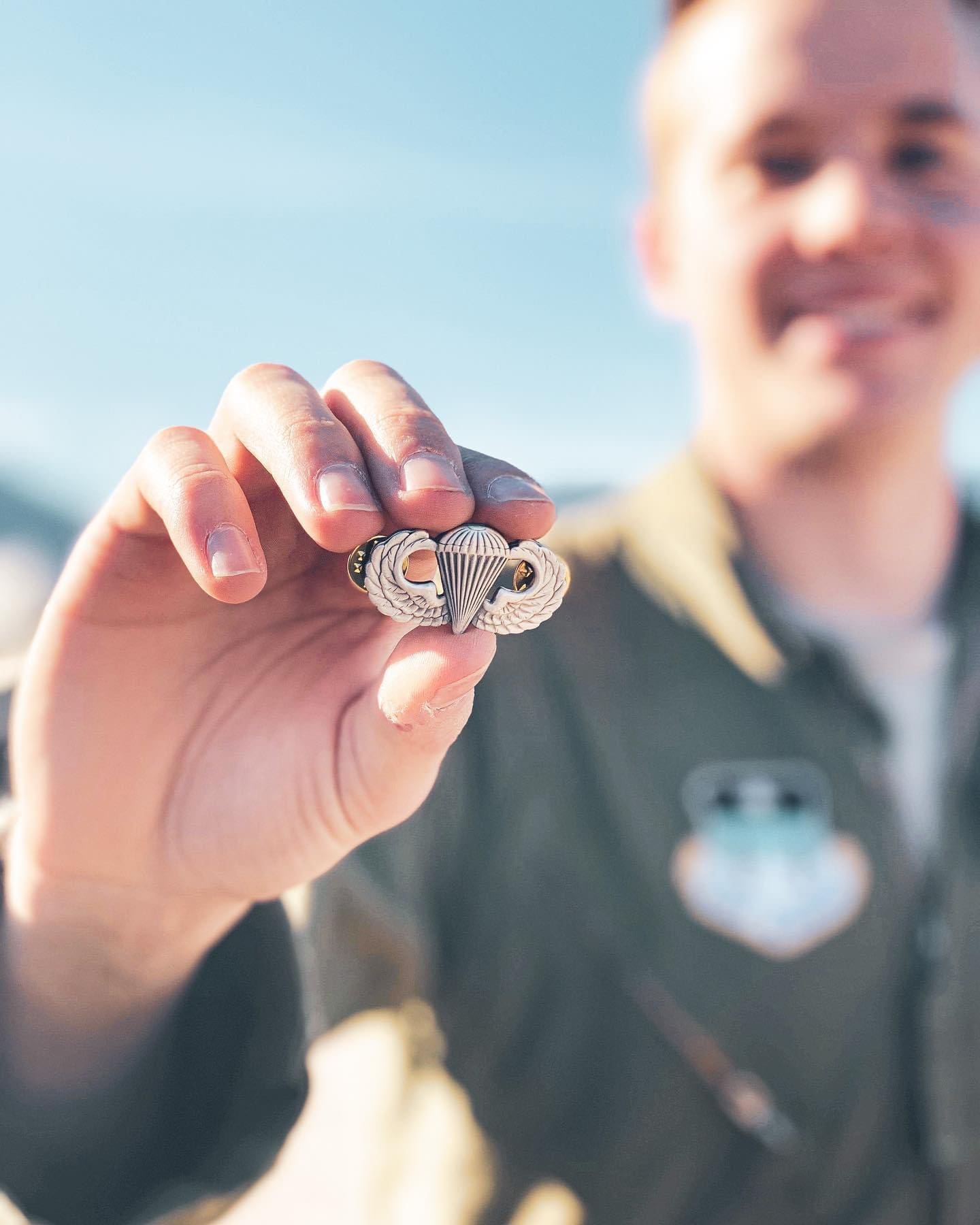
The AFA’s Basic Freefall Parachuting course, known as Airmanship 490 (AM-490), is run by a cadre of Cadets who make up the Academy’s free fall team, the Wings of Blue. The team and course operate as the 98th Flying Training Squadron, 306th Flying Training Group, Air Education and Training Command.
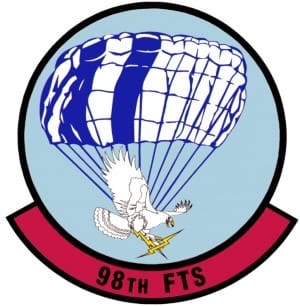
The course website boasts:
Each year, over 700 cadets take the AM-490 course, “Stand In The Door”, and earn their jump wings.
Here’s an example of the instruction:
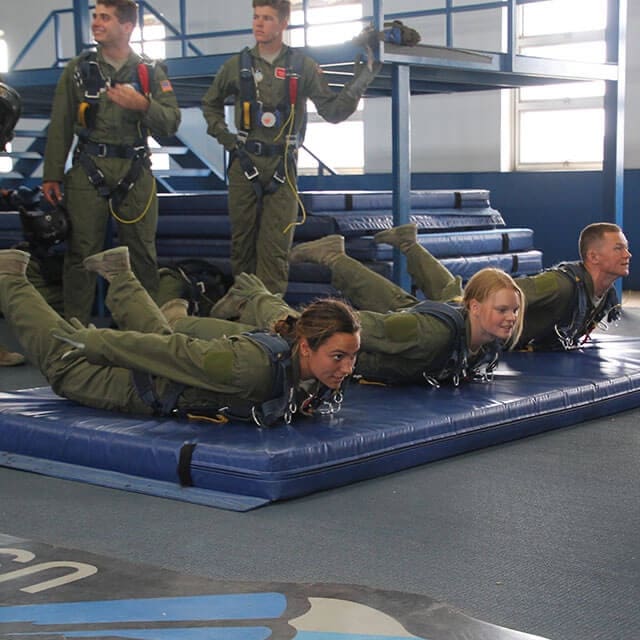
If you’re a static-line parachutist, you’ll wonder what they’re up to and how this translates into jump wings.
While it’s true that there are many members of the Army who attend Basic Airborne Training early in their service, but never jump again, many others are assigned to jump billets later on their careers and use the skills that they were taught as Privates or Lieutenants. But that’s not what happening at the Air Force Academy, because it’s impossible to serve as a parachutist after graduating form the Academy’s AM-490 course of instruction.
The most important issue at hand is that Cadets who complete the program do not learn a military skill, despite being awarded a badge which indicates otherwise.
AFI 11-410 (Personal Parachute Operations) governs management of the Air Force parachuting program. It states:
6.3.2. USAF Academy Parachutist Qualification. Members on active parachute status who are quali- fied as USAF Academy parachutists are authorized to fill validated parachute positions and student authorizations at the USAF Academy. These parachutists are not authorized to fill parachute positions elsewhere (emphasis added) unless qualified through paragraphs 6.3.1. or 6.6. This qualification requires completion of one of the following formal training programs:
6.3.2.1. AM-490, USAF Academy, CO. AM-490 satisfies the qualification requirement for assignment to parachute positions and student authorizations at the USAF Academy and may be completed after assignment selection provided the member is a parachute volunteer.
6.3.2.2. AM-492, USAF Academy, CO. Completion of the jumpmaster curriculum in AM-492 qualifies members to serve as jumpmasters for USAF Academy operations only.
To reference back to paragraph 6.3.1 which covers S/L training:
6.3.1.1. US Army Basic Airborne Course, Ft. Benning, GA.
6.3.1.2. S/L courses or programs of instruction, including Mobile Training Teams (MTTs), approved by the US Army Infantry Center (USAIS).
6.3.1.3. US Navy Special Warfare Command (NAVSPECWARCOM) Naval Parachute School (S/ L Course).
6.3.1.4. AM-490, USAF Academy, CO, when the diploma was earned prior to August 1994. (emphasis added)
To reference back to paragraph 6.6 which covers MFF training:
6.6.1. US Army John F. Kennedy Special Warfare Center and School (USAJFKSWCS) Military Free Fall School, Yuma Proving Grounds, AZ.
6.6.2. MFF courses or programs of instruction, including MTTs, approved by USAJFKSWCS.
6.6.3. NAVSPECWARCOM Naval Parachute School (MFF Course), Naval Air Weapons Station China Lake, CA.
To summarize what those paragraphs mean for graduates of AM-490; to actually serve as a military parachutist, they have to attend one of the courses of instruction mentioned above.
As you can see, Cadets can’t earn advanced ratings. They aren’t filing J-coded billets. They aren’t static line parachutists and they aren’t military free fall parachutists. So what are they? That’s simple; they’re skydivers. The USAFA is creating about 700 new skydivers per year.
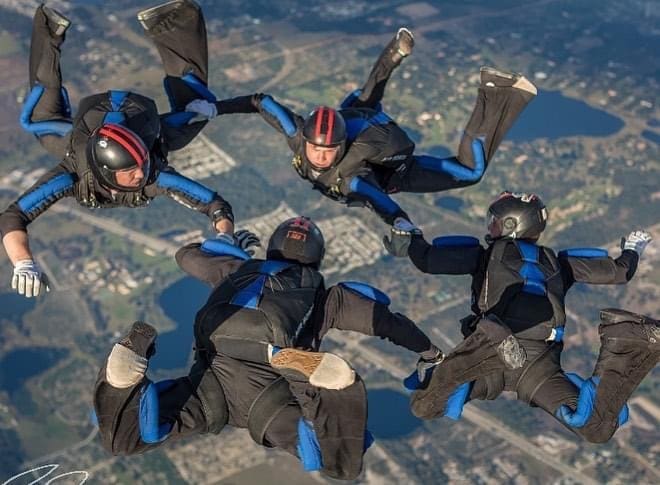
Although it hasn’t been the case for quite some time, over two decades ago Cadets were even allowed to earn Senior and Master parachutist ratings, based on skydives (see above). They selected their own jumpmasters and considered wearing smoke canisters or the flag during demonstration jumps as “combat equipment” jumps.
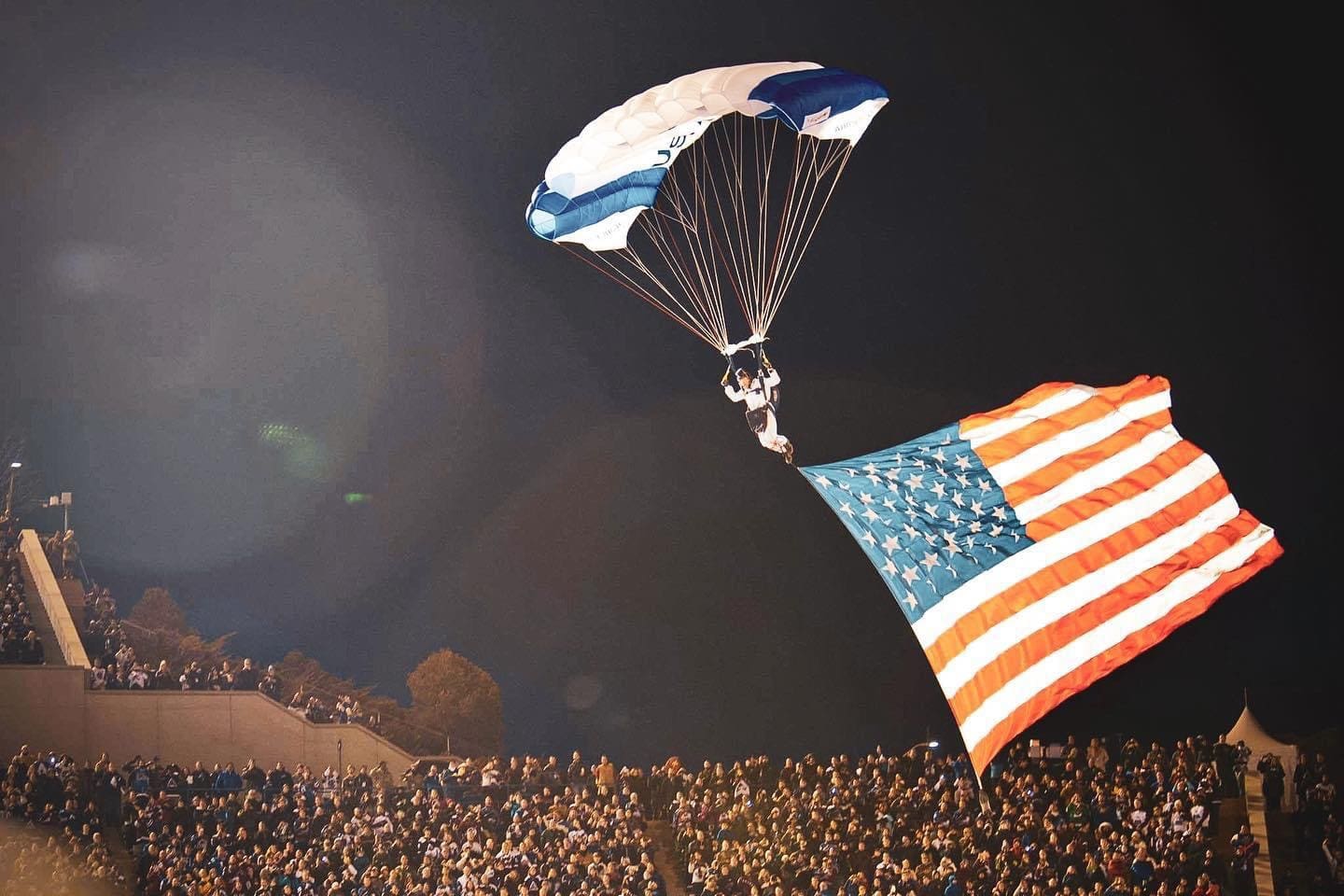
A few years ago, BG Goodwin, an AFA Commandant, wore Senior jump wings which she had been awarded as a Cadet. It caused a bit of confusion for actual parachutists who questioned her qualification, considering she had never served on jump status.
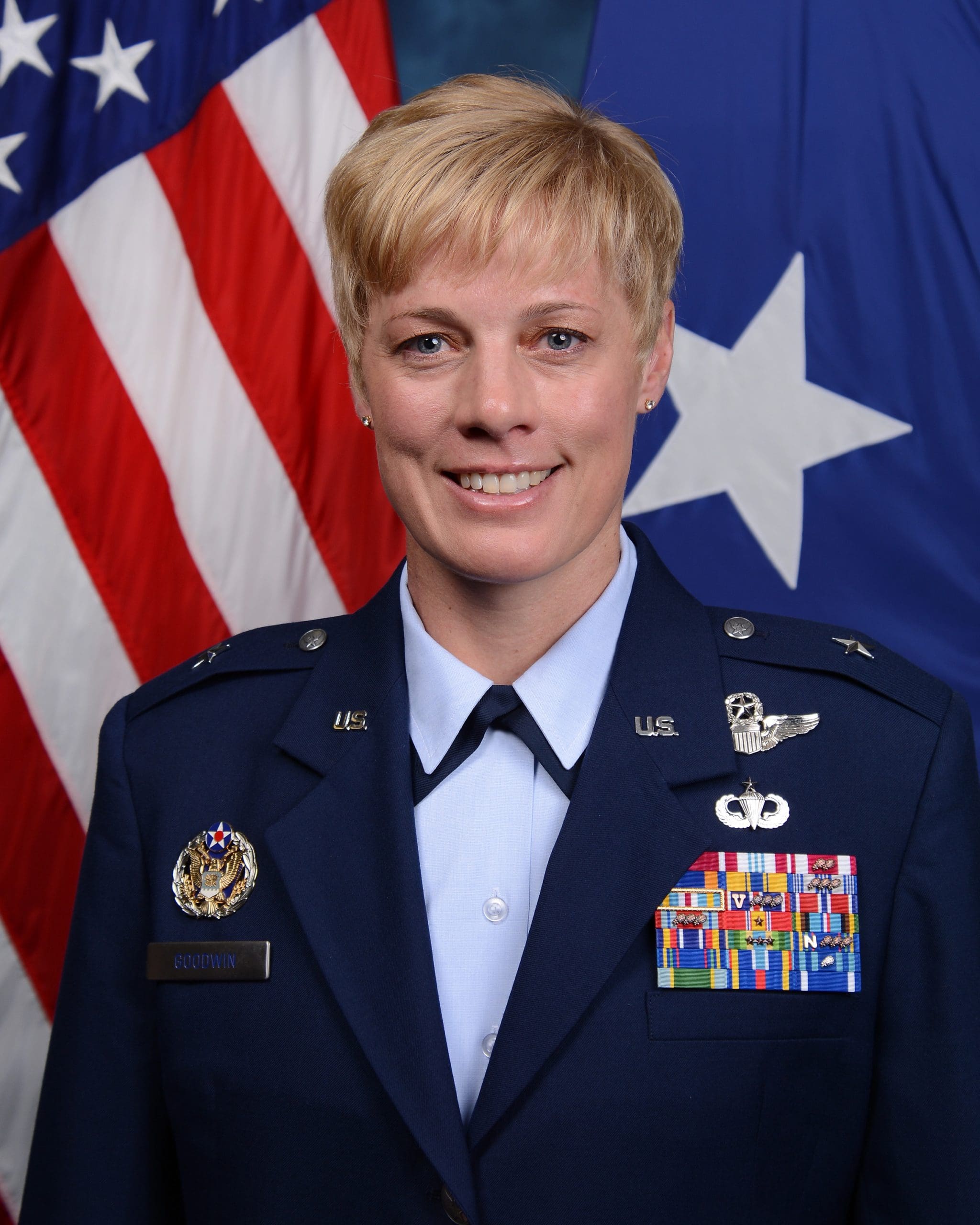
Even today, there are still a few senior officers running around wearing badges they were awarded, but didn’t earn in the way parachutists would expect. That same argument could be made about those current and former Cadets wearing Basic wings. They aren’t qualified as parachutists.
Instead of awarding the basic parachutist badge, Cadets who complete the course should be awarded a cadets-only badge. There is already plenty of precedent for the concept. Cadets learn to fly gliders and even powered aircraft while at the Academy, but they aren’t awarded USAF pilot wings once they complete training. Why even the Space and Cyber communities have clubs for perspective members of their careerfields, but they don’t award actual careerfield badges. Instead, Cadets earn badges they only wear while at the Academy. Many of these are shared with Air Force ROTC.
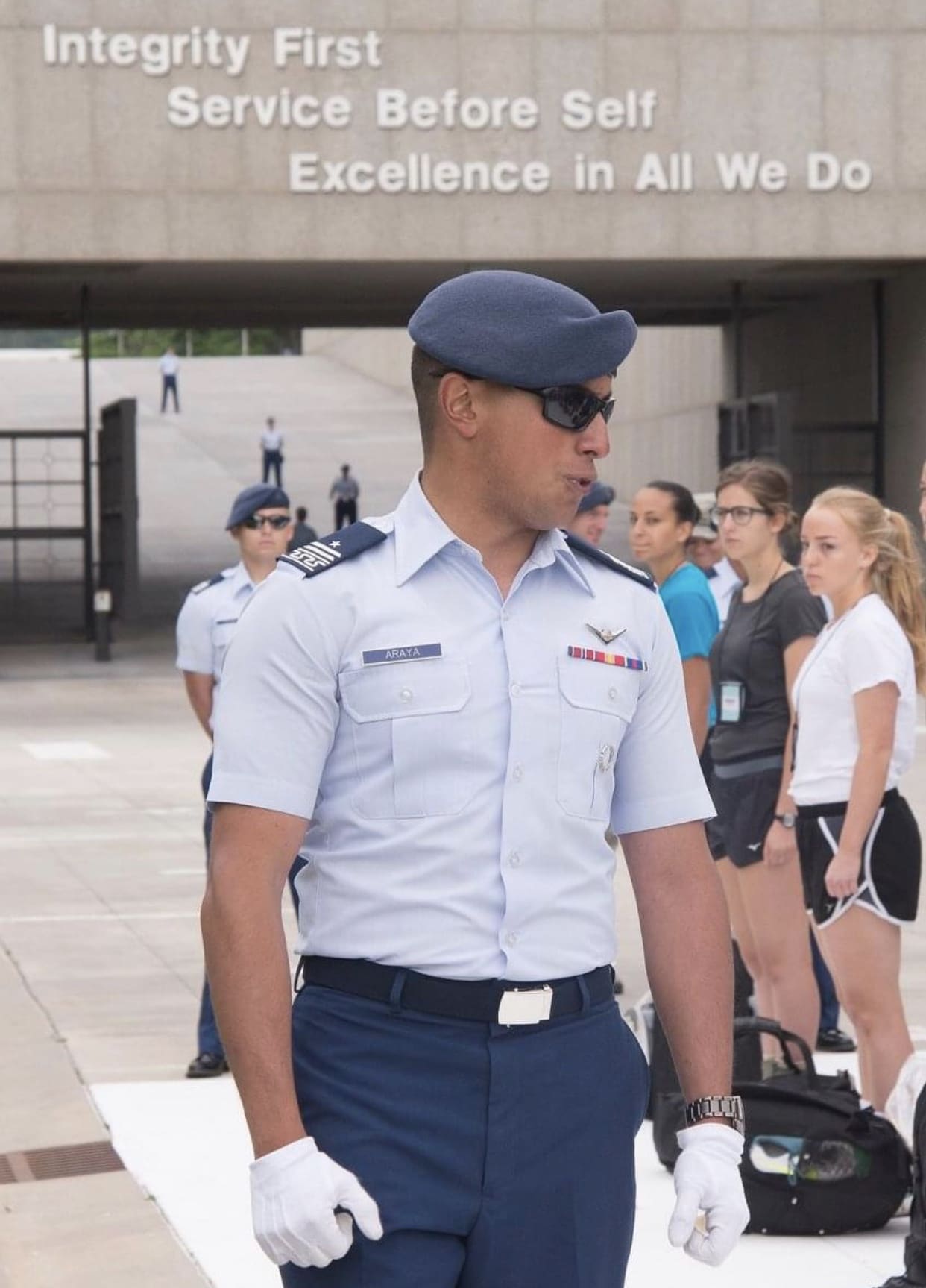
Here’s a list of the many badges which can be earned by Air Force Academy Cadets:
Superintendent’s Pin: Worn only by those cadets whose name appears on the Superintendent’s list for obtaining the Commandant’s Pin, Dean’s Pin, and Athletic Director’s Pin for the previous semester.
Commandant’s Pin: Worn by those cadets whose name appears on the Commandant’s List. The Commandant’s List is reserved for cadets in the top one third in military performance by class. They will retain this status until the end of the next academic semester.
Dean’s Pin: Worn by those cadets whose name appears on the Dean’s list for obtaining a Grade Point Average of a 3.0 or above for the previous semester.
Athletic Director’s Pin: Athletic Director’s Pin: Worn by those cadets who obtain a semester Physical Education Average (PEA) of at least 3.00 during the academic year. The PEA is based on 50% Physical Fitness Test score, 15% Aerobic Fitness Test score and 35% P.E. class grade. Cadets on any probation do not qualify for the Athletic Director’s pin.
Combinations of the Commandant’s Pin, Dean’s Pin, and Athletic Director’s Pin are worn to signify attainment of placement on multiple lists the previous semester.
Soaring Instructor Pilot Wings: World War II glider pilot wings awarded to cadet soaring instructor pilots upon completion of AM-461. A star and wreath are added as cadets progress through the soaring program.
Flying Team Wings: Approved in October 2012, these wings are worn by members of the Flying Team, a select group of cadets who were selected after arriving at the Air Force Academy with a Private Pilot’s license. A star and wreath are added as cadets progress through the soaring program.
Cadet Flight Wings: Flight wings with star are worn by cadets who have soloed a USAFA glider or a powered aircraft. Wings without star are worn by cadets who have completed at least 10 flights in a USAFA glider but have not soloed.
Cadet Aviation Club Wings: Worn by cadet aviation instructors. A star is added for a senior cadet aviation instructor.
Cadet Space Wings: Worn by cadets who are involved in space activities. A star and wreath are added as cadets progress through the space program.
Cadet Cyberwarfare Badge: Worn by cadets to acknowledge the achievement of cadets who are involved in the cyberwarfare program. A star and wreath are added as cadets progress through the cyber program.
Parachutist Badge: Worn by those cadets who have successfully completed either the Airmanship 490 Basic Parachuting course taught by the 98 FTS or graduates of the US Army Basic Airborne Course, Ft. Benning, GA. Senior and Master Parachutist badges require operational experience and are awarded as authorized in AFI 11-402.
Air Assault Badge: Worn by those cadets who have successfully completed US Army Basic Air Assault School.
Bulldog Badge: Worn by those cadets who have completed the Marine Corps Bulldog program at Quantico, VA.
UAS Wings: Worn by cadets who have completed Small UAS (SUAS) certification. A star and wreath are added as cadets progress through the UAS program as instructors and evaluators/test pilots.
Here are a couple of examples.
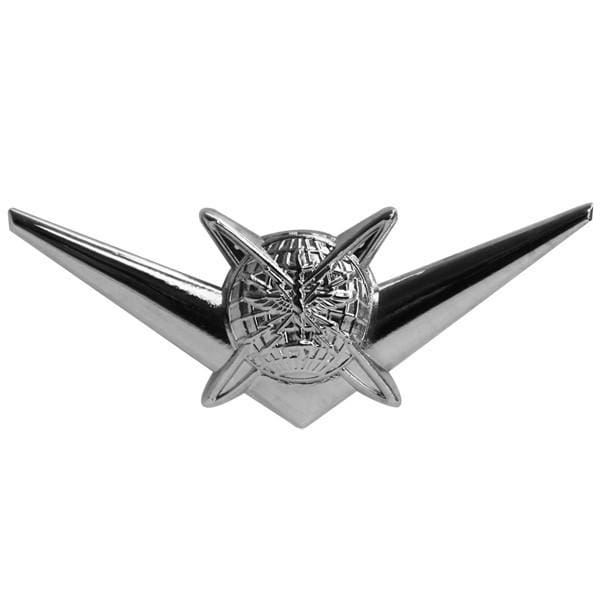
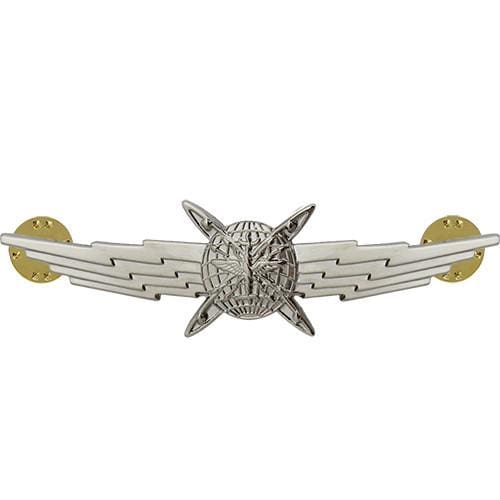
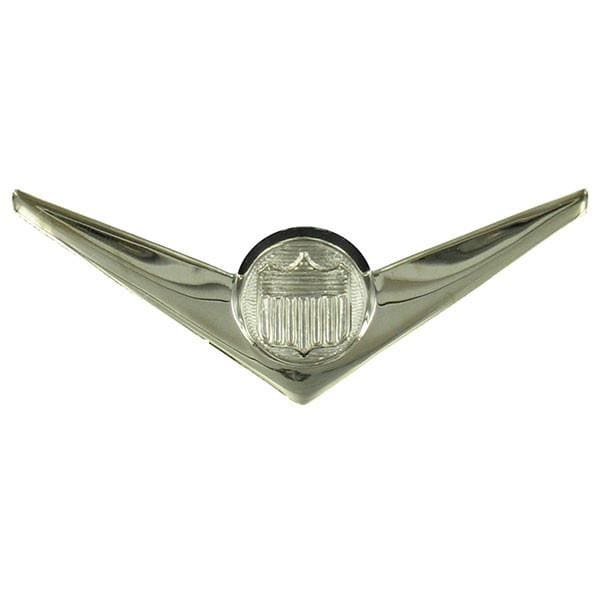
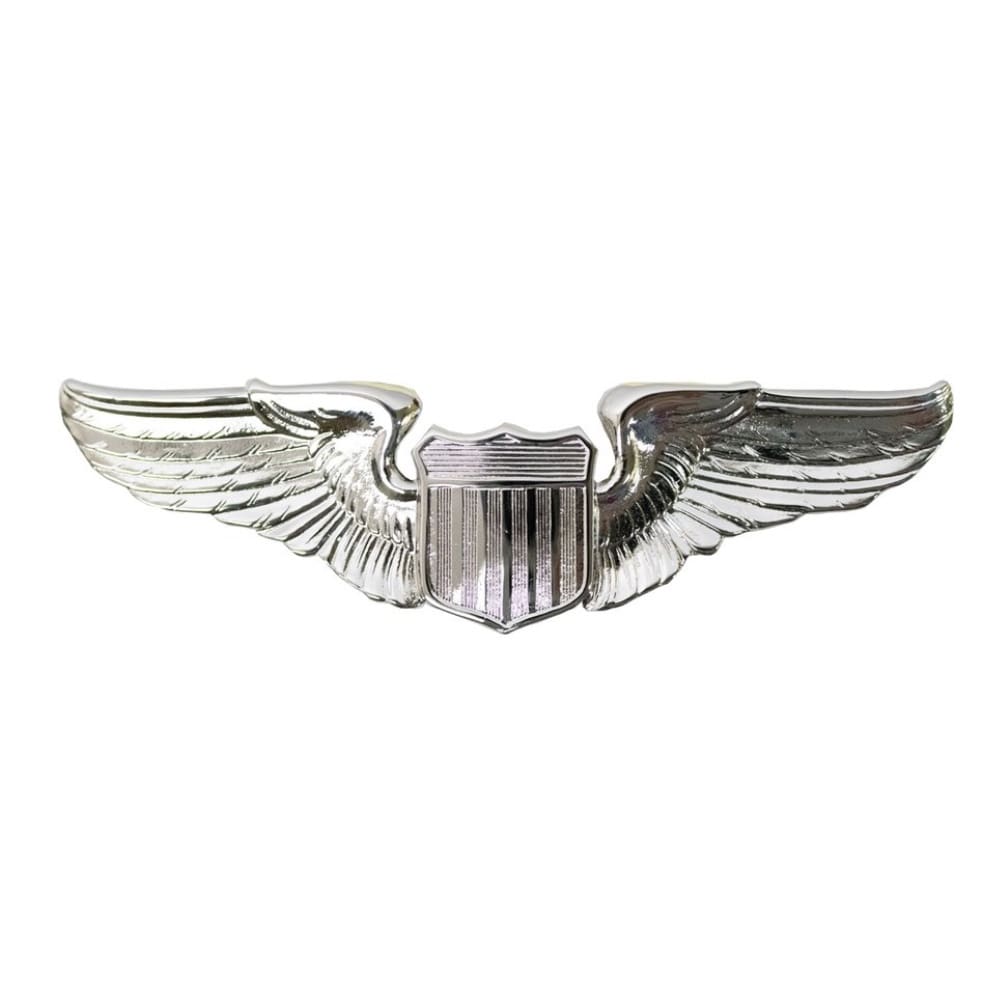
The choice for a Cadet Skydiving Badge is easy. From 1956-1963, the USAF awarded a distinctive badge for Air Force parachutists. Based on the shield now worn by medical personnel, it featured a light blue background emblazoned with a white parachute.
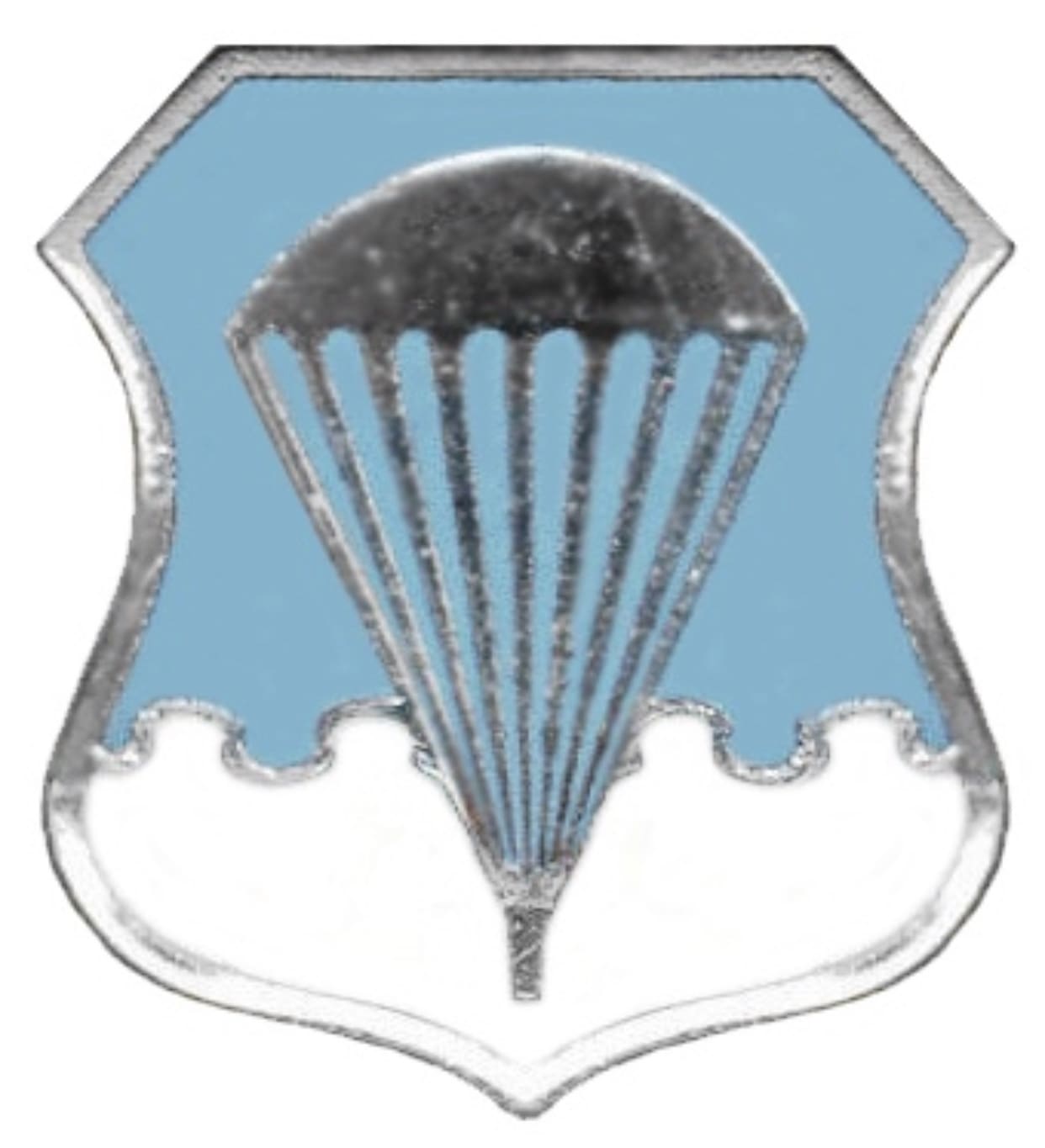
Not only is this design distinctive, but it’s no longer used by the Air Force yet supports the service’s heritage. It’s the perfect design for our skydiving cadets. There are even Senior and master versions. The master variant is seen below.
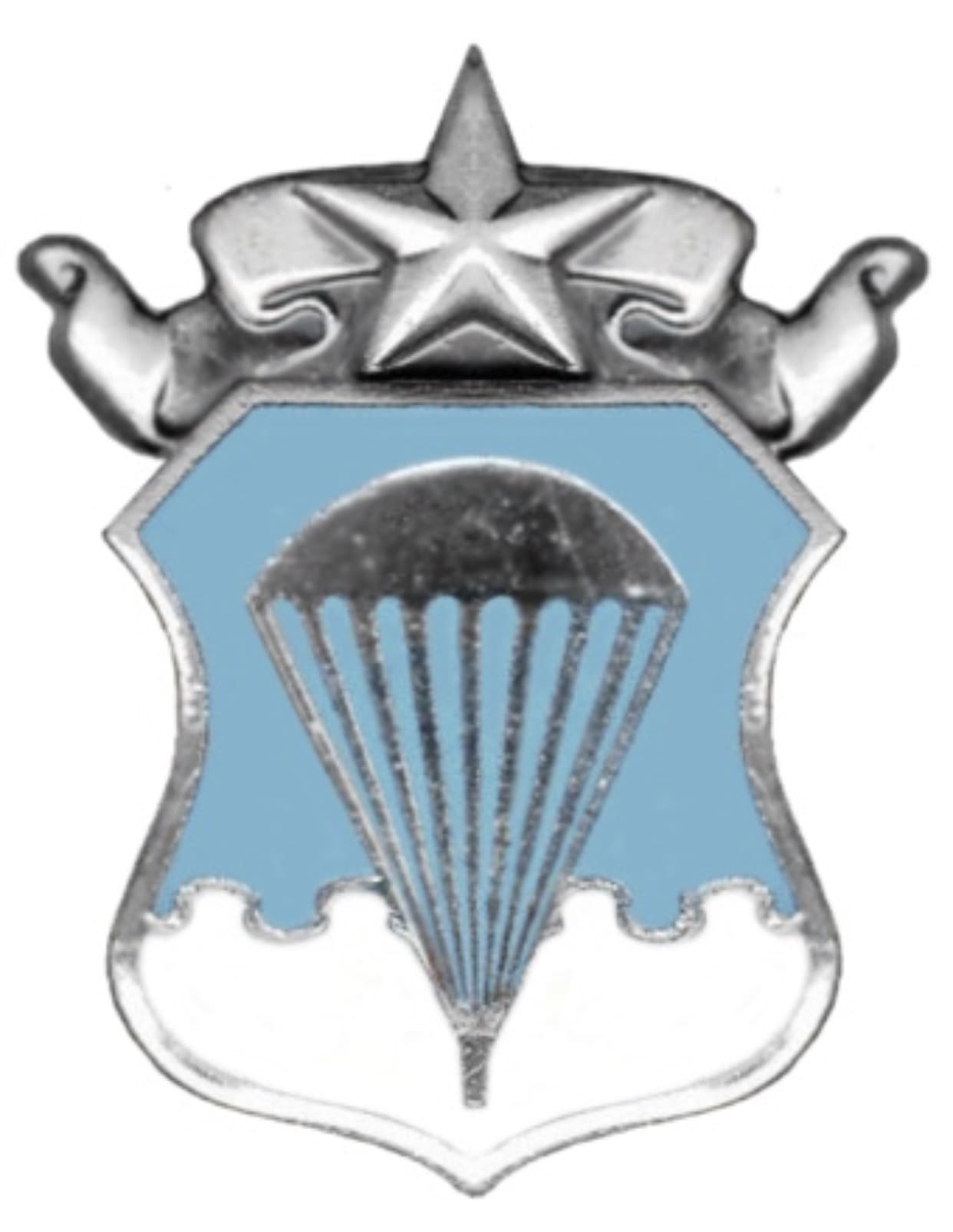
In 1963, the Air Force switched back to the basic parachutist badge used by the other services.
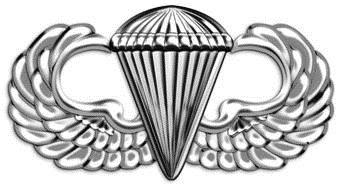
As you can imagine, some AFA cadets do in fact attend the three-week BAC at Fort Benning, Gerorgia. That course teaches a military skill and graduates are awarded basic airborne wings. Just like cadets who attend Air Assault school, they earn their wings.
It’s not that the training isn’t valuable. It should continue. There’s no operational requirement to pilot a glider, but the skill does teach airmanship. Likewise, skydiving teaches Cadets about aviation and instills confidence. As an airmanship course of instruction, it should continue.
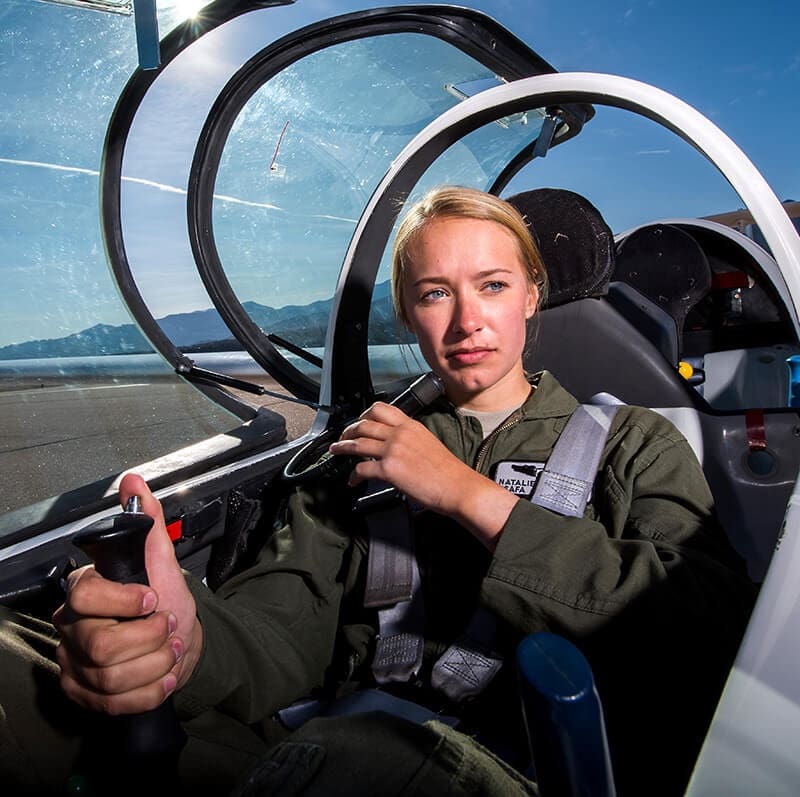
This isn’t the fault of the Airmen, but rather the institution. The Air Force is failing to prepare them for the mission. Recently, AETC attempted to set up its own MFF training program to help streamline its Special Warfare training pipelines with the eventual goal of adding S/L as well. The Air Force scrapped the project when it realized it couldn’t adequately replicate the exacting conditions and standards of the formal courses of instruction already mentioned.
Even the Academy has halted training that didn’t adequately prepare its students for operational roles. At one time, Cadets participated in Survival Evasion Resistance and Escape training run by Cadets at the Academy. When it was determined that it didn’t adequately prepare students for operational requirements, the Resistance portion of the the training was halted and Cadets who required it, received the training as part of the formal course at Fairchild, once commissioned. The Survival and Evasion training continues as part of Basic Cadet Training as it instills confidence and teaches basic outdoor living skills.
Creation of a Cadet Skydiving Badge aligns with other aeronautical programs at the Air Force Academy, recognizing unique skills taught at that institution, while reserving the parachutist badge for those who are actually qualified to fulfill operational duties as parachutists in the operational Air Force.
Very recently, the Air Force asked for feedback regarding dress and appearance, but as I am now retired, my input is understandably not wanted. However, this issue continues to affect the active force. Perhaps others who continue to serve, will make similar suggestions.


Wanted to say. Initially I wasn’t on your side on this. After reading through the article you have changed my mind. I think the AF Academy is doing a great thing by throwing their cadets out of an airplane, but it doesn’t mean they should keep getting jump wings they didn’t earn. Alternatively they could just keep issuing them wings but let them know they can’t be worn after their time at the academy. There is plenty of precedent for awards being earned and worn for service while in college. Take a look at traditional military schools with ROTC programs that still have distinct uniforms (VA Tech, VMI, Citadel, Texas A&M). Plenty of ROTC cadets earning and wearing badges and ribbons that will never be worn once they leave school.
That’s the point of those cadet only awards, like the one I propose. They are earned during collegiate training but discarded once active service is attained.
Didn’t change my mind – just made me aware of an issue I didn’t know existed.
No way in hell should they be wearing the same badge as me and 10s of thousands of others who actually went through the proper course at Benning to earn those wings.
Personally, I’d be in favor of a badge that looks more “skydiver” than the old badge SSD shows (such as replacing the round ‘chute with a square), but almost anything would be better than the current sitch.
It may go nicely with their paintball badge.
Do they get a CIB for that?
-no it isn’t
Then what is?
Bro, I jumped out of plenty of airplanes.
Not interested in a badge.
Not sure why these folks need one, they haven’t even spent a day in service yet. Don’t care if they did skydiving as a civilian.
While I get the whole “cadets are civilians” trope and the salt that comes along with it, (I was 4 years prior-enlisted, now a cadet at USAFA), cadets are not civilians. We are active duty military as defined in 38 U.S. Code §?1965.
Yes, you are. But AM-490 graduates still aren’t military parachutists.
Sure give them traditional Airborne wings…while we are at it we may as well give them Combat Divers badge for basic swimming skills, Air Assault badge for using Deodorant, and EOD badge for witnessing Fireworks on 4th of July.
All kidding aside, if you didn’t attend airborne school or Navy Whal school for static line you aren’t Airborne. No disrespect, just a fact.
True.
May as well give them the remote effects award for giving the enemy a threatening glance.
I see no issue with this. It’s a cadet only badge, identical to the RECONDO badge I got at USMA, or the stars and wreaths for academic performance that I definitely didn’t get. Just a way to recognize cadet achievement while they are Cadets.
Falling to earth after jumping from a high place is not an achievement.
Just because you can pull a ripcord doesn’t mean you achieved anything, just means you decided not to be stupid.
Air Force officers will never utilize this for the good of our country, this is a waste of money.
maybe we should make a q course only badge for MFF since we all know 99% of those graduates will never free fall again…
i’m obviously being sarcastic
Well, it’s an actual course, so they’ve got an actual skill they could be called upon to use. It’s not like they have to go to another school to jump.
It was said that if you want to jump into combat you should choose another method.
These folk will never use this “skill” in combat, nor ever see combat.
Speaking as one who completed the course, students of the MFF course are not mission capable afterword. Significant training at the unit level is required. The AFF course creates a competent military freefall capability upon graduation.
When was the last time the US Air Force jumped anyone in to kill someone?
Lets not pretend that this is a real combat skill … unless you are a JSOC assaulter … no one in the air force is a JSOC assaulter.
Wrong. STS have combat jumps and PJ’s routinely jump to make saves.
So you’re comfortable taking a AM-490 grad and putting O2 and combat equipment on them for a HAHO jump? Since both the AM-490 graduate and Navy AFF graduate require additional training? I mean, what’s the point of the MFF course at all if we could simply send everyone down to the local sky diving center and pay a couple of grand to get everyone qualified? Same goes for S/L. We could just let folks do it on their own dime, pin on their own wings, and show up for manifest call to draw a chute. Or does the training need to be mission focused?
The new CAB, the Cadet’s Airborne Badge.
Up next, the new CDQC Badge, the Cadet’s Diver Qualification Course (PADI, NAUI).
USMA sends Cadets to the actual CDQC at Key West. USAFA could send their cadets to the AF course at Panama City. I’m actually surprised they haven’t created a Special Warfare track for cadets.
But does USMA still send cadets to CDQC? When I was there (2003-2007) they discontinued it half way into our trainup because the course changed from 4 to 6 weeks and interfered with summer training
That could very well be.
Yeah, in fact last summer they sent cadets to both CDQC and to the USAF diver course.
What would a 2LT do in Army Special Forces?
Insert joke here:______________
Joking aside, I would believe it helps Army Special Forces to have officers that have military experience before leading unconventional soldiers. There is also an added benefit of conventional Army experience for when they interact with that part of the service and especially when they progress to higher positions of responsibility.
He used to crank the generator.
If you don’t mind me cutting/pasting, I’ll make the proposal via the new call for input on uniforms.
Do what you need to.
The skills attained, and judgements required, at the Airforce academy for their freefall course are so far ahead of the basic military SL course my meter isn’t even registering a concern.
If the Navy can now do SL in 4 days, and USN China Lake used to do it in 3 days with zero jump experience, and then into military freefall. It might not be terrible for Colorado Springs to do a one or two day dope on a rope module, to successful freefall jumpers by adding the required portions of curriculem.
It’s not ahead, it teaches an entirely different skill. It is more akin to MFF, but it doesn’t teach any of the skills required to conduct MFF. It doesn’t teach military parachuting at all, neither S/L or MFF. It’s just a skydiving course.
One of the reasons the AF decided to continue to send its jumpers to BAC at Benning is that the AF conducts very few unilateral operations. Rather, Airmen are embedded with Army forces. They are better served to learn S/L procedures along with their customer.
The Navy on the other hand, rarely jumps with anyone else, with the exception of attached AF personnel.
I was there when we started the Navy SL/MFF course. It had nothing to do with unilateral jumps simply pipeline efficency. Ft. Benning takes 4 weeks to (including travel time) to do Static line where NSWC in Coronado can do in 3 days with 1 flex day. The Navy can do SL & MFF in less time than the Army does SL. This has to do with with more reliable weather, better facilities w/no down time, less travel time and students of a different sort.
I would have no worries sending a civilian skydiver/AF cadet out on a mil static line with a 45min brief and demo. They know how to fly, understand more complex emergency procedures, and have solved more complicated sequencing already. One would never send a SL jumper out skydiving. The cadet jumper is far more qualified and capable in a real sense than a SL jumper.
The Army is the proponent for air operations and certifies the NSW Air course, just as the Navy certifies the Army Combat Dive course. This not insignificant administarative burden is likely why the AF Academy has not certified their course.
Sure, they can jump with a SEAL Platoon, but they aren’t going to be able to participate in an airborne operation like properly trained Airmen.
The problem is that that skydiver isn’t used to doing it the Army way. If you put them in a stick on a Mass Tac with the 82nd they are going to be a football bat.
Once upon a time, there was an SF Group Surgeon who was non-airborne qualified, after permanently busting his ass at Army Jump School. After nominally healing, his motivating ambition was, still, to earn his jump wings. Ft. Benning would not allow him back, so a drug deal was eventually worked wherein the USAFA threw him out of a Twin Otter and kept him from harm until he passed their course. When he came home, he was heartily congratulated and told “Doc, you are no longer a Leg. Now you are grounded before you kill yourself!”
There was once a 68w deathly afraid of flying and horrified at the thought of jumping. There was also a stick that needed a 68w for their jump. Fate intervened, duty (rank?) won over fear and with minimal training that man ended up jumping. Well, as dad told it, he was basically thrown out of the plane.
It never ended up on his DD214 and he never qual’d in any way. The only “proof” was a tattered photo of a soldier on the ground with a medic insignia who looked like he just rucked 5 miles and was cycled through a washing machine. The look on his face is priceless- and they never let him forget it…
As for BG Goodwin, she was fired in 2019:
https://militarycorruption.com/goodwin/
https://www.stripes.com/news/us/air-force-academy-removes-commandant-of-cadets-from-job-amid-investigation-1.578972
https://www.npr.org/2019/04/29/718512535/air-force-academy-abruptly-removes-its-commandant-of-cadets
Goodwin is a perfect example of a ‘golden child’ being rushed through the key assignments despite being a horrible leader to pander to the SJWs (creating a lesbian GO). The IG investigation that led to her removal as USAFA Commandant found she was a toxic leader, abused the DOD travel system, took a half-day off once a week for “family time” without charging it to leave/pass, and regularly lied and blamed others to cover up her own errors. The official USAF webpage showing her bio still lists her as the CoS for JFSCC, but for the last year she’s been hiding at US Northern Command as the chief of the previous commander’s (Terrence O’Shaughnessy) “Transformation Office”, leading an Army O6, a Navy O5 and a small handful of other mil and GS employees to investigate potential organizational changes to meet O’Shaughnessy’s desire to make NORTHCOM more like a ‘warfighting’ Homeland Defense CCMD and less like the Defense Support to Civil Authorities command it actually is. It doesn’t surprise me one bit that she’d wear sr parachutist wings to make herself look better, while lacking any real substance behind the badge.
And, the crazy thing is, at least 1/2 of the people that she works around (Navy, civilians, etc) could give less of a shit about her awards (Let alone ID them) while still knowing that she was fired and sent to their team…..how rewarding.
You should send this to AF Times as an OP-ed piece.
You know where I’m coming from.
So do Chicago public school ROTC cadets receive a CAB upon graduation?
They should, and probably something for getting a GSW and surviving, too.
There were about 80 of us in 1972 trying to get the 12 slots for the AM 470 program. So it was decided that we’d run a 3 mile race, and the top 12 finishers would get in the program. Weather was miserable, so we ran in the Fieldhouse–6 laps to a mile. Half ran, the other half counted laps, then we switched. Still remember the guy calling out to me “7 down, 11 to go”. Whew. Got in. Got my wings, loved it, then bought my own paracommander (the hot parachute at that time–long ago) and began lots of other jumping. Went to Ft Carson for jumps out of a helicopter. Strong winds, so someone made the decision that only experienced jumpers would be allowed, and experienced jumpers was defined as anyone with a paracommander parachute. So with my 11 jumps, I got my first helicopter ride. Started jumping at Meadow Lake airport. The cadet rules were that a USAFA instructor had to be wherever a cadet was jumping. One day, the weather was bad, so the instructor said we may as well go home. I said nah, the weather may get better. The rules were changed.
This >> “Instead of awarding the basic parachutist badge, Cadets who complete the course should be awarded a cadets-only badge.” Plain and simple, no more – no less.
Son is a 2017 Grad and went to CDQC, ran the train-up selection for cadets there after until he graduated. Was mostly Army swimmers make the cut, for train up and CDQC but his class had an Army wrestler in it.
The AF officer pictured, having graduated in 1993, according to sources cited in this very post, is literaly qualified to wear the military jump device and take part in military jump operations:
6.3.1.4. AM-490, USAF Academy, CO, when the diploma was earned prior to August 1994. (emphasis added)
Yes, she is. But that doesn’t mean she knows what she’s doing. And that’s the point. Go ask her to JMPI a jumper.
I dont see any skulls…
which set fear in the hearts of those,who understimate the real power of the participants!
Or some crossed daggers…
Maybe a stylised cocccyx 😉
or has any unit a skull plus a spine…”Predator”- trophy-like…
AFROTC grad on AD and I wholeheartedly agree with this. It’s automatically assumed when you see an AF O wearing jump wings that it’s a “Zoo badge” rather than real wings. Having graduated from both AASLT and BAC I get asked if I went to USAFA all the time simply because of the jump wings.
As a graduate of both AM-490 and the US Army Basic Airborne Course, my impression is that AM-490 was a FAR superior course that required more skills than BAC. I appreciated what I learned at BAC, but what I appreciated the most was the paratrooper tradition. If the parachutist badge were a “paratrooper” badge, then your argument might hold more weight.
If Air Force Senior Leaders were to change their position that what the students are doing now is not enough to earn a parachutist badge, then one alternative to changing 60+ years of tradition would be to return 98 FTS training to it’s original form—where students jumped with combat equipment and/or round chutes.
Thank you ALL for your service to our great country.
I always laugh when a skydiver tells me that their hobby prepares them to conduct a MASSTAC airborne insertion at night, with equipment. Both Army and AF graduates of BAC regularly make such a jump on their cherry blast.
Once again, AM-490 doesn’t train for any military mission. Do you feel that the Glider course, or even the powered flight training at the Academy trains one to be a military pilot? As I stated in the article, even the Space and Cyber communities don’t believe that the Academy experience rates award of their careerfield badges, something a three-level is awarded after Tech school.
Have you ever managed a personal parachute program? USAFA would never be able to replicate BAC. The management of the equipment alone would be impossible. The manpower billets for AFE and instructors would have to be stolen from somewhere. And, considering USAFA doesn’t have an airborne mission, a ridiculous waste of money and resources.
The 98 FTS has a rich history that includes previously doing round parachute jumps with equipment. I do not know if it included the EXACT equipment used at BAC but I disagree it would be difficult to meet a military (I.e. not Army only) standard. The round-only jumps went away many years ago when too many cadets were getting injured. It made sense to go to square parachutes to prevent cadets from losing their pilot qualifications. However, if one were to look a little deeper it might make more sense for pilots to get better training in round chutes in case they need them one day over a combat zone. Better to twist an ankle in Colorado Springs than post-ejection in Vietnam. The free fall training was just one way the program is more challenging and required more skill than BAC. It’s easy to make assumptions about the jump program at the academy based on your own information that might not be as complete as those of us who have been through both programs. But if you take the time to look into the rich history and capabilities there you might be surprised.